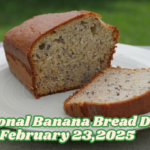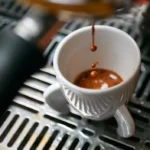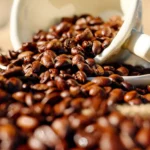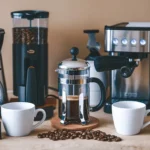Grinding coffee beans may seem straightforward, but mastering it is sure to enhance your brewing experience. The skilled barista and coffee lover alike will appreciate a certain flair for the actual nuances of coffee grinding.
In this insightful guide, we shall cover the definition behind the grinding of coffee beans, all the various grind sizes, and the grinding tools available, while also advising on how to get it just right. After reading this thorough tome, you will be equipped to grind coffee beans like a pro.
Why Grinding Coffee Beans Matters
Grinding coffee beans is vital for maximizing flavor extraction. When the roasted coffee beans are ground, the increased surface area allows water extraction of soluble compounds that contribute to aroma and taste. The size of the grind affects the extraction process, influencing the fortification, tastes, and overall quality of the resulting brew.
For example, a fine grind exposes more of the bean’s surface to the water; therefore, extraction occurs more rapidly and yields a stronger-flavored coffee. Conversely, coarse grounds expose less of the bean to the water; thus, the extraction is slower and milder. The key to brewing a perfect cup of coffee is understanding how grind size dictates extraction.
Different Grind Sizes and When to Use Them
1. Coarse Grind
A coarse grind resembles the consistency of sea salt and is generally used for methods such as French press and cold brew. The bigger the particle, the slower the extraction; hence, these brewing methods prefer this size of grind.
2. Medium-Coarse Grind
Medium-coarse grind resembles rough sand and is usually used for the pour-over method called Chemex. In this case, the slightly smaller particles lead to a more equal extraction, thus bringing out the flavors in the coffee.
3. Medium Grind
The medium grind is like regular sand and thus all-purpose for a variety of brewing methods like drip coffee makers and siphons. It provides a nice balance between less finely ground and coarsely ground coffee-extraction processes.
4. Medium-Fine Grind
Medium-fine ground is coarser than table salt but nonetheless finer than the grainy consistency of sand. It suits well for faster pour-over methods like Hario V60 and AeroPress. This grind size is perfect for allowing for quick extraction and therefore lighting nuanced flavors.
5. Fine Grind
Such a fine grind is as fine as common table salt, reserved for espresso machines and Moka pots. The small particles allow for a quick extraction, calling forth a strong concentrated coffee.
6. Extra Fine Grind
Extra fine grind, or Turkish grind, has a powdered consistency. It should be used for Turkish coffee, where the grounds spend long amounts of time in contact with water, allowing for a thorough extraction.
Choosing The Right Grinder
The exact right grinder, depending on its quality, can be equally pivotal in the quest for the perfect grind. In broad terms, a coffee grinder is divided into blade grinders and burr grinders.
1. Blade Grinders
Always with a spinning blade cutting beans into tiny bits, blade grinders are the cheapest and simplest. Unfortunately, they often allow for an inconsistent grind, resulting in uneven extraction and poor-quality coffee.
2. Burr Grinders
Two revolving abrasive surfaces, called burrs, smash the coffee beans to produce ground coffee with a more consistent size. Though these are pricier than the blade, burr grinders perform way better since they give a consistent grinding size. They are for dedicated coffee lovers.
Manual Vs. Electric Grinders
1. Manual Grinders
Manual grinders require effort to grind the beans, but they do give way more control over the grind size. They are portable, quiet, and mostly cheaper than electric grinders. Unfortunately, they can be time-consuming, especially with very substantial amounts of coffee.
2. Electric Grinders
Electric ones provide convenience and speed, which are probably best in busy mornings or for brewing for more than one person. They come with various settings to set grinding sizes, yielding more consistency and accuracy. The downside with them can be that they are mostly loud and costly.
Tips for Achieving the Perfect Grind
- Consistency is Key: Aim for a consistent grind size to ensure even extraction and a balanced flavor profile. Inconsistent grind sizes can lead to over-extraction or under-extraction, resulting in bitter or weak coffee.
- Adjust Based on Brew Method: Different brewing methods require different grind sizes. Experiment with various grind sizes to find the perfect match for your preferred brewing method.
- Use Fresh Coffee Beans: Grinding fresh coffee beans just before brewing preserves the coffee’s aroma and flavor. Stale coffee beans can result in a dull and flat-tasting brew.
- Clean Your Grinder Regularly: Coffee oils and residues can build up in your grinder, affecting the taste of your coffee. Regular cleaning ensures that your grinder performs optimally and produces a consistent grind.
- Measure Your Coffee: Using the right amount of coffee for your brew method ensures a balanced extraction. Too much or too little coffee can throw off the flavor and strength of your brew.
Final Thoughts
It requires many skills to grind coffee beans like a pro: its relationship to extraction and then the grinder itself; maintaining that controlled consistency and taste with time. If you follow these tips and instructions from this article, you surely will get to know how to attain the perfect grind and, thus, learn a better experience with the total coffee brewing process.
No matter whether you prefer the French press or an espresso machine with a coarse grind or finer grind, mastering grinding as an art will empower every cup of coffee to be full and bursting with the most rich and vivid flavors.
FAQs
How does grind size affect the taste of my coffee?
The grind size directly impacts the extraction process and, consequently, the taste of your coffee. A finer grind increases the surface area, leading to quicker extraction and a stronger, more intense flavor. A coarser grind results in a slower extraction, producing a milder and less bitter coffee.
What is the difference between a blade grinder and a burr grinder?
Blade grinders use a spinning blade to chop coffee beans into small pieces, often resulting in an inconsistent grind size. This can lead to uneven extraction and suboptimal coffee flavor.
Is it possible grind coffee beans without a grinder?
Yes, it is possible to grind coffee beans without a grinder, though it may be more challenging to achieve a consistent grind size. Some alternative methods include using a mortar and pestle, a rolling pin, or even a blender.










